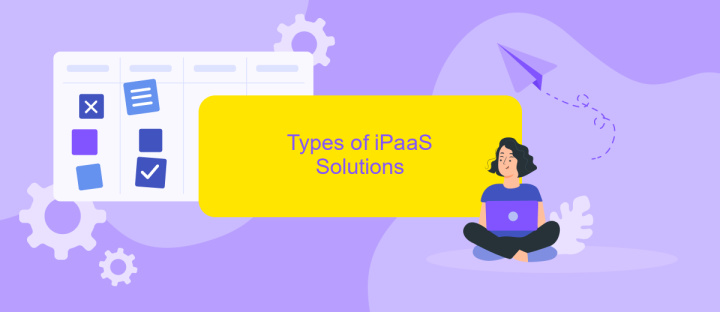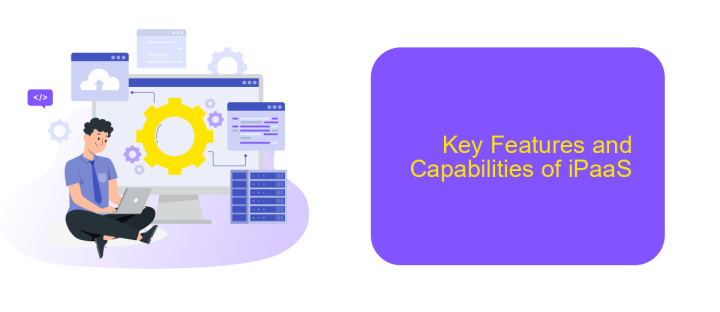iPaaS Integration and Automation
In today's fast-paced digital landscape, businesses are increasingly turning to Integration Platform as a Service (iPaaS) solutions to streamline their operations. iPaaS offers a seamless way to integrate disparate systems and automate workflows, enhancing efficiency and reducing manual errors. This article explores the transformative power of iPaaS, its key features, and how it can drive business growth through improved integration and automation.
Introduction to iPaaS
Integration Platform as a Service (iPaaS) is a cloud-based solution designed to connect disparate systems, applications, and data sources within an organization. By streamlining these connections, iPaaS enables seamless data flow and enhances operational efficiency.
- Automates data integration processes
- Supports real-time data synchronization
- Reduces the need for custom coding
- Scales with business growth
- Enhances data accuracy and consistency
For businesses looking to simplify their integration efforts, services like ApiX-Drive offer a user-friendly platform to connect various applications without extensive technical knowledge. By leveraging iPaaS solutions, organizations can focus on their core competencies while ensuring their IT infrastructure remains agile and responsive to changing needs.
Benefits of iPaaS Integration and Automation

iPaaS (Integration Platform as a Service) offers significant advantages for businesses by streamlining the integration process between various applications and services. One major benefit is the reduction in manual data entry, which minimizes errors and saves valuable time. This automation ensures that data is consistently accurate and up-to-date across all integrated systems, thereby improving decision-making and operational efficiency. Additionally, iPaaS platforms like ApiX-Drive provide user-friendly interfaces that allow even non-technical users to set up and manage integrations effortlessly.
Another key advantage of iPaaS integration and automation is scalability. As businesses grow, their need for more complex integrations increases. iPaaS solutions are designed to scale with the business, accommodating new applications and higher data volumes without significant additional costs or infrastructure changes. Moreover, these platforms often come with robust security features, ensuring that data transfers remain secure and compliant with industry standards. By leveraging iPaaS, companies can focus more on strategic initiatives rather than getting bogged down by integration challenges.
Types of iPaaS Solutions

iPaaS (Integration Platform as a Service) solutions come in various types, each designed to meet different integration needs and business requirements. These solutions enable seamless data flow and process automation across diverse applications and services.
- Enterprise iPaaS: Tailored for large organizations, these solutions provide robust integration capabilities, extensive security features, and scalability to handle complex workflows and vast amounts of data.
- SMB iPaaS: Geared towards small and medium-sized businesses, these platforms offer user-friendly interfaces, cost-effective pricing, and essential integration tools to automate routine tasks and improve operational efficiency.
- Specialized iPaaS: Focused on specific industries or use cases, these solutions offer pre-built connectors and templates for niche applications, ensuring quick deployment and optimized performance.
- Hybrid iPaaS: Combining cloud and on-premises integration capabilities, these platforms support businesses with mixed environments, ensuring seamless data synchronization and process automation across all systems.
An example of a versatile iPaaS solution is ApiX-Drive, which simplifies integration setup with an intuitive interface and a wide range of connectors. It enables businesses to automate workflows effortlessly, ensuring data consistency and operational efficiency.
Key Features and Capabilities of iPaaS

iPaaS (Integration Platform as a Service) offers a comprehensive suite of tools designed to streamline and automate the integration of disparate systems and applications. This technology enables businesses to connect various software solutions, ensuring seamless data flow and operational efficiency.
One of the key capabilities of iPaaS is its ability to support a wide range of integration scenarios, from simple data synchronization to complex, multi-step workflows. With iPaaS, organizations can easily manage integrations without the need for extensive coding or technical expertise.
- Pre-built connectors for popular applications and services
- Drag-and-drop interface for creating and managing workflows
- Real-time data synchronization and transformation
- Scalability to handle growing data volumes and integration needs
- Robust security features to protect sensitive data
For instance, ApiX-Drive offers a user-friendly platform that simplifies the integration process. By providing pre-configured connectors and a visual interface, ApiX-Drive allows businesses to set up and automate integrations quickly, reducing the time and resources required for manual data handling. This makes it an ideal solution for companies looking to enhance their operational efficiency and data accuracy.
Best Practices for Successful iPaaS Implementation
To ensure a successful iPaaS implementation, it is crucial to start with a clear understanding of your integration objectives and requirements. Conduct a thorough assessment of your current systems and workflows to identify bottlenecks and areas for improvement. Engage key stakeholders early in the process to gather insights and set realistic goals. Prioritize integrations that offer the most value and align with your business strategy.
Choosing the right iPaaS solution is equally important. Opt for a platform like ApiX-Drive that offers user-friendly interfaces and robust features to streamline the integration process. Ensure the platform supports a wide range of applications and provides seamless data synchronization. Regularly monitor the performance of your integrations and make adjustments as needed. Establish a feedback loop with your team to continuously improve and adapt your integration strategy. By following these best practices, you can maximize the benefits of your iPaaS implementation and drive business growth.
FAQ
What is iPaaS and how does it work?
What are the benefits of using iPaaS for automation?
How secure is data when using iPaaS solutions?
Can iPaaS integrate with legacy systems?
How can I get started with iPaaS integration and automation?
Do you want to achieve your goals in business, career and life faster and better? Do it with ApiX-Drive – a tool that will remove a significant part of the routine from workflows and free up additional time to achieve your goals. Test the capabilities of Apix-Drive for free – see for yourself the effectiveness of the tool.

